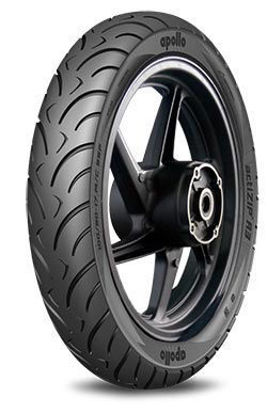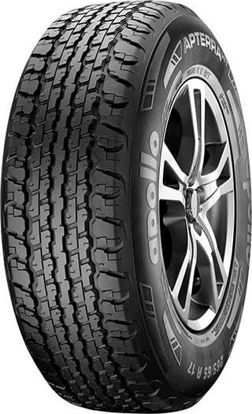The Ultimate Guide to Choosing the Best Racing Bike Tyres

Strong 8k brings an ultra-HD IPTV experience to your living room and your pocket.
When it comes to high-performance cycling, every component of your bike plays a crucial role, but none more so than the tyres. Whether you're a professional racer or a weekend enthusiast, your choice of racing bike tyres can significantly impact your speed, grip, handling, and overall safety on the road. This guide delves into everything you need to know about choosing the best racing tyres for your bike, including how to understand bike tyre sizes and select the right model for your riding needs.
Why Racing Bike Tyres Matter
Racing bike tyres are specifically designed to offer optimal performance at high speeds on paved surfaces. Unlike mountain bike or hybrid tyres, racing tyres prioritize minimal rolling resistance, lightweight construction, and maximum grip. Their composition, tread pattern, and casing are built for rapid acceleration and precise cornering — essential for both competitive racing and high-speed recreational riding.
But not all racing bike tyres are created equal. Several factors can influence how a tyre performs, from weather conditions to road surface to rider weight. Choosing the wrong tyre can lead to decreased performance, poor handling, or even an increased risk of flats.
Key Factors to Consider When Choosing Racing Bike Tyres
Tyre Width
Modern racing tyres typically come in widths ranging from 23mm to 32mm. Narrower tyres (23mm–25mm) offer lower rolling resistance and are lighter, making them a favorite for time trials and smooth road races. Wider tyres (28mm–32mm), on the other hand, provide better grip and comfort, especially over rough roads and long distances.
Wider tyres can also be used at lower air pressures, which helps reduce fatigue and enhances traction without significantly compromising speed. Many competitive cyclists are now switching to 28mm tyres for endurance and all-around road performance.
Tread Pattern
Although most racing bike tyres have a slick or nearly slick surface for minimal rolling resistance, the tread can still affect grip, particularly in wet conditions. If you frequently ride in the rain or on less-than-perfect roads, opt for tyres with a slight tread pattern or textured surface to improve water dispersion and grip.
For dry, smooth conditions, slick tyres remain the best choice for maximum speed and efficiency.
Tyre Compound
The rubber compound used in a tyre affects its grip, rolling resistance, and longevity. Softer compounds offer better grip but tend to wear out more quickly, while harder compounds provide longer life at the expense of some traction.
Some high-end racing bike tyres use dual or triple compound construction, where different sections of the tyre are made with varying rubber hardness. This allows the centre to remain durable while the edges provide extra grip for cornering.
Puncture Protection
Speed is important, but not at the cost of flat tyres. Many racing bike tyres now feature Kevlar or other puncture-resistant layers built into the casing. While these tyres may be slightly heavier, the added reliability can be a game-changer, especially during long-distance events or in urban environments with lots of road debris.
If you ride on relatively clean roads, you might opt for lighter tyres with minimal protection. But for all-weather and endurance riders, puncture resistance should be a priority.
Tubeless vs. Tubed
Tubeless racing tyres are gaining popularity for their ability to run at lower pressures, reduce rolling resistance, and avoid pinch flats. They also seal small punctures with the help of sealant inside the tyre. However, tubeless setups require compatible rims and a bit more maintenance.
Traditional clincher tyres with inner tubes are still widely used and preferred by many for their ease of installation and broader compatibility.
Bike Tyre Sizes: Know What Fits
One of the most commonly misunderstood aspects of tyre selection is understanding bike tyre sizes. The two key measurements to pay attention to are:
Diameter: Most racing bikes use a 700c wheel, which corresponds to a 622mm bead seat diameter. Make sure your tyre is compatible with your wheel diameter.
Width: As mentioned earlier, widths range between 23mm and 32mm. However, not all frames and brakes can accommodate wider tyres. Always check your bike’s clearance before upgrading to a larger size.
It’s essential to match your bike tyre size with your riding goals and bike geometry. An ill-fitting tyre could rub against your frame or brake pads, compromising safety and performance.
Popular Tyre Types for Racing
Slick Tyres
These are the most common types used for road racing. They offer minimal rolling resistance and are ideal for smooth pavement. However, they can lose grip in wet conditions if not made from high-quality compounds.
Semi-Slick Tyres
These tyres have a mostly smooth center with minimal tread on the shoulders. They strike a balance between speed and grip, making them suitable for mixed weather or road conditions.
All-Weather Racing Tyres
Made from advanced compounds and featuring reinforced casings, these tyres are designed to perform consistently across various conditions — dry, wet, or cold. They often include puncture protection and slightly more aggressive tread patterns.
Maintenance Tips for Long-Lasting Performance
Choosing the best racing bike tyres is only part of the equation. To ensure they continue performing at their peak, follow these care tips:
Regular Pressure Checks: Under or over-inflation can lead to poor handling and increased risk of flats. Use a digital pressure gauge to maintain optimal PSI.
Inspect for Debris: After each ride, check your tyres for embedded glass, stones, or sharp objects that could cause slow leaks.
Rotate Tyres: If your front and rear tyres wear unevenly, consider swapping them to extend their lifespan.
Replace When Needed: Tyres have wear indicators — tiny grooves or dots in the tread. Once these vanish, it’s time for a new pair.
Choosing the Right Brand for Racing Bike Tyres
When investing in tyres, brand reputation matters. You want a company that blends innovative technology with reliability and performance. One such trusted name is Apollo Tyres, a brand renowned not only in the automobile sector but also for producing high-quality racing bike tyres that cater to professional and recreational riders alike.
Apollo Tyres brings decades of experience in rubber technology and road performance, making them a top choice for cyclists looking for a perfect balance between durability, grip, and speed. Their extensive range includes various bike tyre sizes, ensuring compatibility with modern racing bikes while offering optimal performance on roads and tracks.
Conclusion
Choosing the right racing bike tyres involves more than picking the most expensive or visually appealing set. It requires understanding your riding needs, knowing how bike tyre sizes affect performance, and making informed choices based on terrain, conditions, and personal preferences.
Whether you're preparing for a race, training on varied roads, or just looking to enhance your everyday ride, the right tyre can elevate your experience. And when you’re seeking both performance and reliability, brands like Apollo Tyres offer cutting-edge solutions that meet the high demands of today’s cyclists.
Note: IndiBlogHub features both user-submitted and editorial content. We do not verify third-party contributions. Read our Disclaimer and Privacy Policyfor details.







